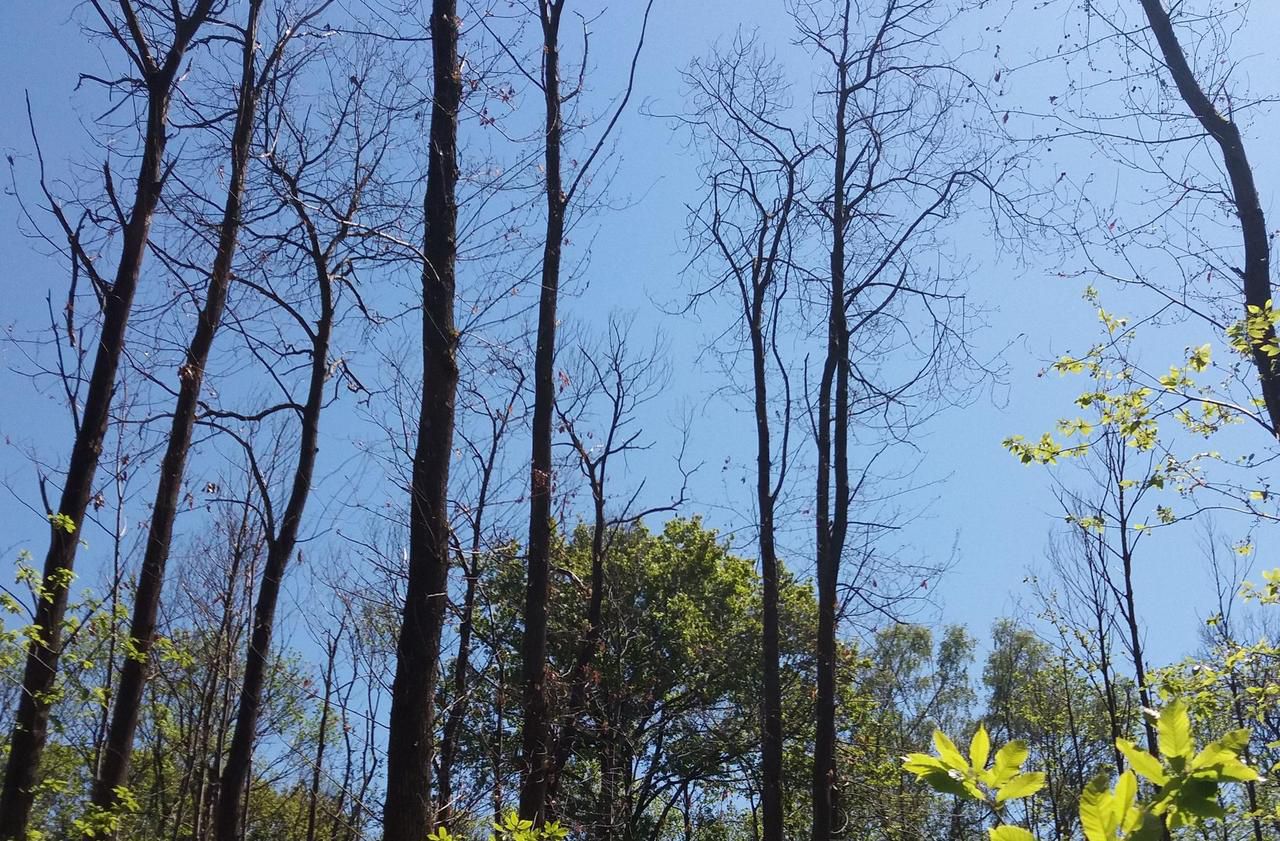Science to the rescue of nature.
While chestnut ink is devastating forest massifs and their biodiversity, which could decimate the surface of several football fields in a few months, an innovative project aims to map the progress of the disease in Ile-de-France and in the Oise thanks to a satellite, to better understand it.
A first.
To "teach" artificial intelligence to recognize affected trees, "we use Sentinel-2 satellite images with a ground resolution of 10 meters," explains Thierry Bélouard, from the Forest Health Department (DSF).
This type of image does not allow you to see the trees;
we rather see the stand or parts of the stand (or forest plot).
"
An evolving mapping
In the field, the agents selected, in June, circular plots of 20, 30 or 40 m in radius called “plots” for which they recorded the GPS coordinates.
"They noted the state of health of the dominant trees (trees with access to light) on these plots", specifies Thierry Bélouard.
Thanks to the satellite, the computer compares the images of these witnesses with those of all the forests in the region.
And spot the similarities.
The analysis is then passed on to the foresters, who are currently checking in the field that the technique is working.
Each day the mapping is progressing a little more and should be released in October.
Florian Lemaire, ONF forestry engineer, assesses the health of chestnut trees and geo-locate stands;
these data crossed with those of the satellite images make it possible to calibrate the artificial intelligence.
ONF / Y. Nadji
If the forest health department, in charge of the health surveillance of French metropolitan forests, the ONF and the National Institute for Agronomic Research (INRAE) are joining forces for this large-scale project, it is because 'It's urgent.
The disease, which arrived from Asia at the end of the 19th century, circulated quietly for a long time.
After participating in the decline of the fruit chestnut grove, it has become a major problem for French forests.
READ ALSO>
The Chantilly forest is dying ... and becomes a giant lab to save the trees of France
"The invasive microscopic organism moves in water through the soil to infect trees", describes Cécile Robin, researcher in the "Genetics and Ecology of Forest Diseases" team at INRAE.
A rather mild and rainy end of winter is fertile ground for these pathogens which invade the entire root system and sometimes the foot of trees.
Newsletter My Earth
Every week, the environmental news seen by Le Parisien
I'm registering
Your email address is collected by Le Parisien to enable you to receive our news and commercial offers.
Learn more
And when a drought arrives, the tree with necrotic roots can no longer draw enough water: it withers, then dies.
A phenomenon bound to accelerate with global warming, because the pathogen, which proliferates with the rains, does not disappear in times of drought.
"There is no hope that it will stop", loose Cécile Robin.
When the tree does not die back from these root infections, necrosis can reach the crown of mature trees.
These flame-shaped necrosis, which may be accompanied by oozing and discharge of a blackish liquid, are characteristic of ink.
INRAE
“These organisms, similar to fungi, are capable of attacking many species of trees, in full vigor, whose sensitivity varies greatly.
Among the latter, the European chestnut is one of the most sensitive but not the only one, continues Cécile Robin.
There are also cases of pedunculate oak.
The ink of the chestnut tree began to wreak havoc on the Atlantic coast and the Pyrenees, before reaching all French regions in the early 2000s.
No treatment to eradicate the disease
Until doing irreversible damage in the forest of Montmorency, the largest forest massif of Val-d'Oise which extends over 12 municipalities, of which the 2,000 hectares of the public part are made up of 70% chestnut trees.
“If signs of degradation appeared in the summer of 2015, it was in 2016 with a rainy spring and a dry summer that the problem arose,” notes the Ministry of Agriculture.
To the point of forcing the ONF to cut down a quarter of the forest and then replant it with other, more resistant species.
"In this crisis situation, the manager needs, beyond the technical knowledge of the subject, quantified elements of evolution to make his decisions", insists the Ministry of Agriculture.
Last year, the very first stand mapping, limited to this area, was developed.
"The same method has been reproduced on all the chestnut groves of Ile-de-France and Oise," says the ministry.
The results will make it possible to qualify the state of health of gasoline on a regional scale.
»A mine of crucial information to try to save the Ile-de-France forests and their biodiversity.
Because if there is no treatment method to eradicate the disease, researchers rely on this mapping to improve their knowledge.
Because of the drought, the ink disease is wreaking havoc, as here in the Montmorency forest in Val-d'Oise.
LP / Arnaud Journois
An application to report diseased trees
"The most resistant are the chestnut trees originating in Asia," explains Cécile Robin, specialist in pathology.
But these species turned out to be poorly adapted to the French climate.
We are therefore trying to identify the resistant within the European chestnut, in order to select them in the long term.
A priori, the development of the disease is slower and less dramatic in a mixture with oak than in the case of pure chestnut plantation ”.
To further improve the inventory, the researcher and her team have launched a call to citizens to collect field data, via the dedicated Vigil'encre application.
What to combine the useful with the pleasant during an outing in the forest.







